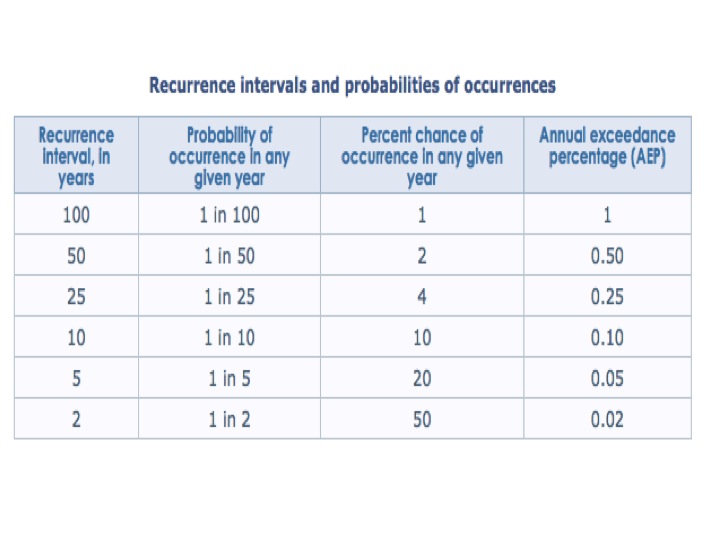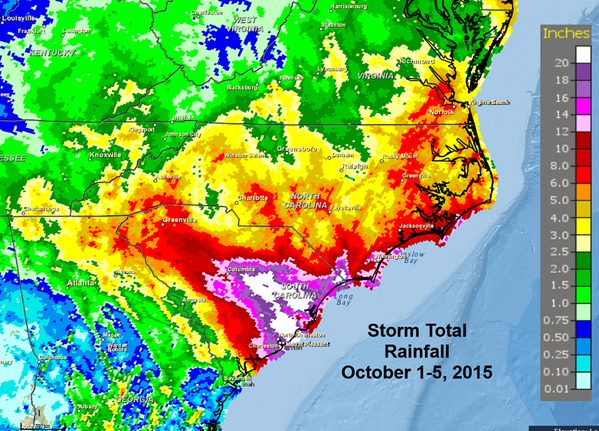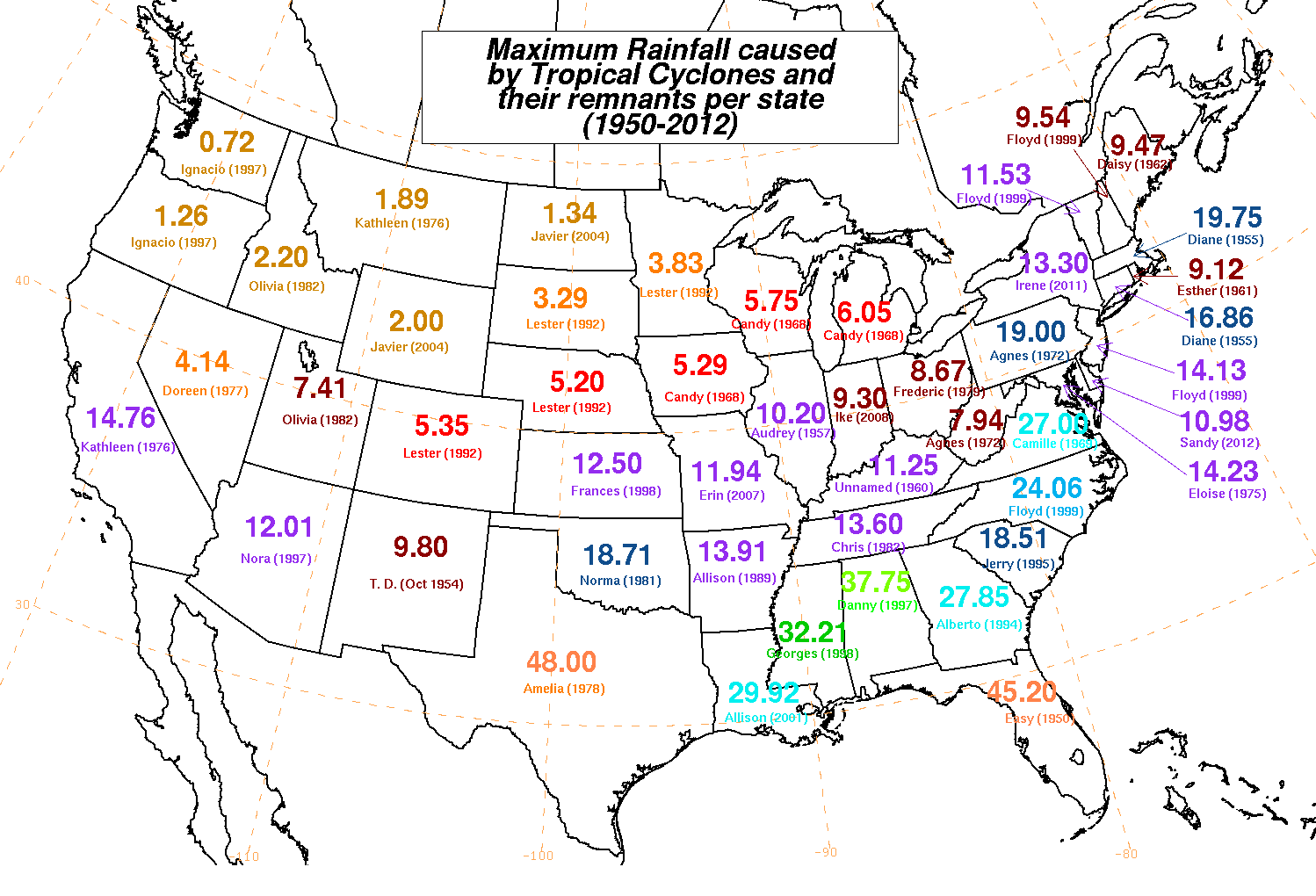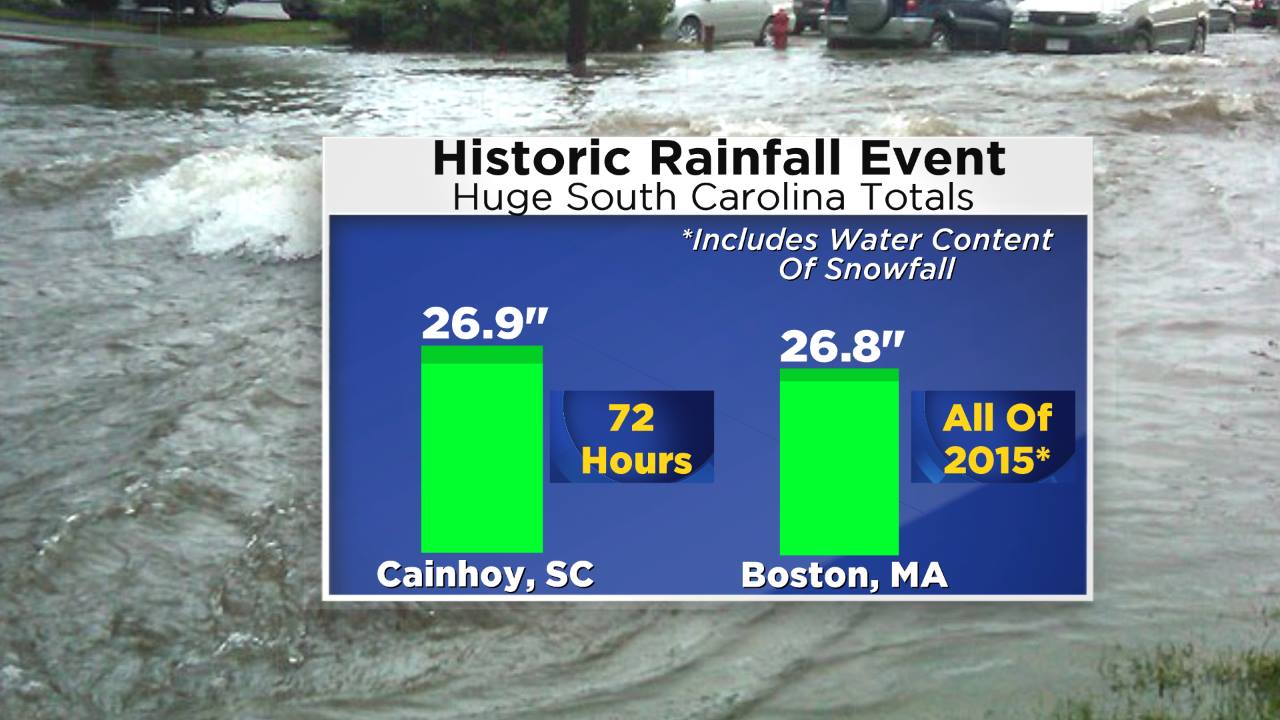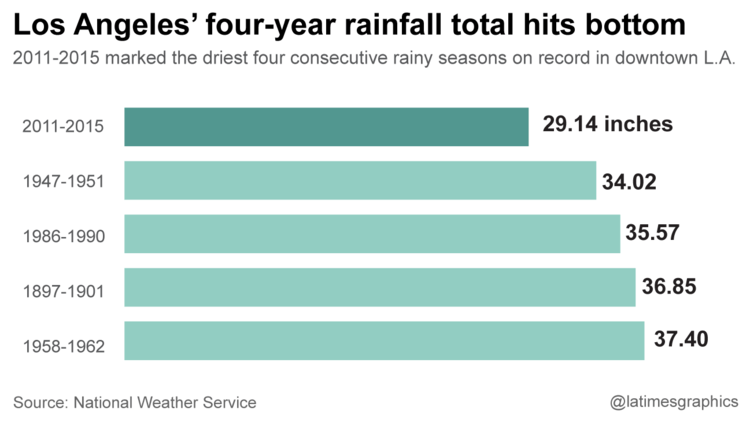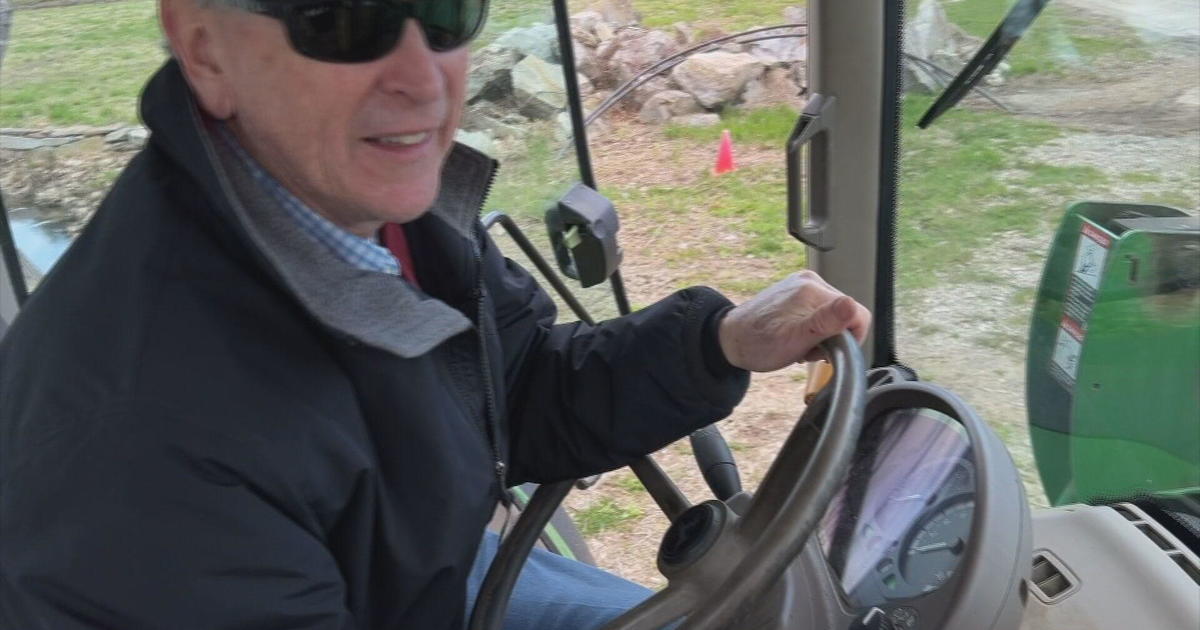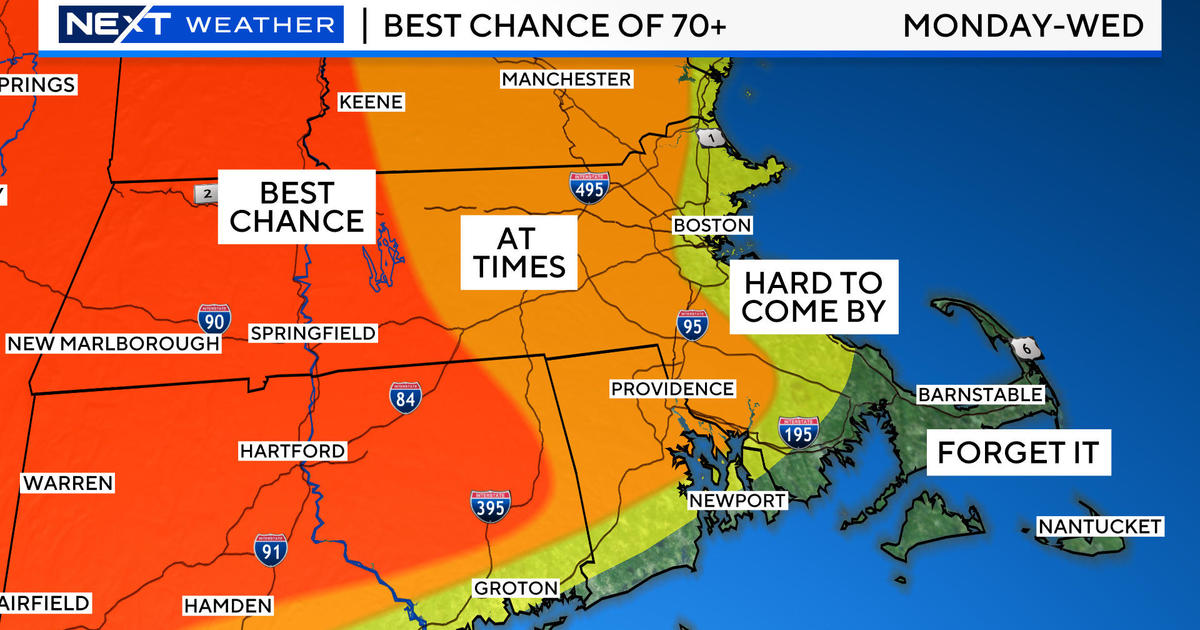How Much Rain Fell During Historic Southeast Flooding?
Find Eric Fisher on Twitter and Facebook
We reversed our fortunes last week and put a big dent in the drought, but it's nothing compared to the absolute fire hose of tropical rain that was unleashed on the Carolinas this past weekend. In particular, South Carolina, where an 'atmospheric river' set up shop and sprayed the region with record-smashing amounts of rain. These atmospheric rivers are bands of air that have tropical origins and contain unusually high amounts of water vapor. If they get directed toward land, flooding is nearly always the result. Certainly that has been the case.
Source: USGS
First things first - what does a 1,000 year rain event actually mean? Do we have a time machine hidden at NOAA? Was someone around taking meticulous weather observations in 1015? Not exactly. The phrase refers to a 'recurrence interval.' In less geeky words, it refers to the likelihood of a particular event happening. Much like grabbing a scratch ticket at 7-eleven when you're feeling lucky, there are odds on the likelihood of certain atmospheric results. For instance, the Irene flooding in 2011 was considered a 1,000 year flood event. A 1,000 year rain event means that chances are 1 in 1,000, or 0.1%, that it will occur in any given year. Does it mean that we're off the hook for 1,000 years? Absolutely not. It just means the particular odds of such a deluge are generally low. We could end up having 10 of these in South Carolina in the next 10 years, and then none for 10,000 years. Marshall Shepard, a former President of the American Meteorological Society, wrote an excellent post for Forbes about this topic which you can find here.
Animation: Watch an amazing water vapor loop showing the evolution of the South Carolina flood: Click Here
The other part of this story is that you can't truly have a '1,000 year flood' because a 'flood' is contingent on what people are doing in the area. A flood might not happen if humans aren't there to build dams, change river flow, add buildings to a waterfront, etc. Floods can appear to be happening much more often with time if an area becomes more developed. For instance, a widespread Atlanta flood is much more likely now than it was 40 years ago when the city's population was only 2 million. Now it's approaching 6 million. More stuff in the way = more places to flood.
Nearly everyone across both South and North Carolina saw at least 3" of rain, but areas in purple/white saw double digit rain with many towns around Charleston surpassing 20"! Source: NWS Charleston
Either way, the flooding has been tremendous in the Palmetto State. How much had to fall in order for this to happen? The numbers are staggering. Widespread 20"+ totals were reported over a period of only ~72 hours. It's not the most we've seen from a tropical system, or for a flood event aided by a tropical system. But it's definitely up there on the leaderboard. Joaquin indirectly added some of its tropical moisture to the event, although the heavy rain would have happened regardless of Joaquin. The cut-off low spinning across the Southeast would have drawn in that moisture and dumped huge rain one way or another. But you can see that the totals rival Floyd, one of the worst storms to ever hit the region. Even with a shaky Joaquin forecast at times, this bulls-eye of extreme rain was expected many days in advance and talked up by numerous meteorologists to get the warning out. Unfortunately, there's only so much you can do once rain reaches this level.
To visualize how much rain ~27" is, consider this. Mt. Pleasant, SC (right next to Charleston) saw 26.9" of rain in about 72 hours. The city of Boston has seen 26.8" of rain for the ENTIRE YEAR. That includes all the water content of our record snowfall. So picture every rain shower, every thunderstorm, every snowflake you've seen through 2015. And then have it all fall on your head over the course of a weekend. It really boggles the mind.
For a different perspective, Los Angeles just recorded its driest 4-year wet season stretch ever observed. The wet seasons of 2011-2015 saw just 29.14" of rain, about the same as the Carolina flood. Or think about the poster child for 'rainy city of America', Seattle. That title is a misnomer, but even still, the Emerald City hasn't seen nearly as much rain in 2015 as the 3-day weekend Carolina flood. Just 20.44" have fallen on Seattle in 2015.
Source: The L.A. Times. Full article on the California drought
At least 4.4 trillion gallons have fallen and things are finally starting to wind down. I could give some stats on how many bathtubs that would fill, or how many olympic sized swimming pools. But here's some food for thought. According to NASA back at the end of 2014, about 11 trillion gallons are needed to end the California drought. Wouldn't it be nice if we could take those extra 4.4 trillion gallons and erase half of the California situation? If we can move oil around the world with pipelines, it stands to reason we could figure out ways to transport water and alleviate dry conditions elsewhere. How about it science?
